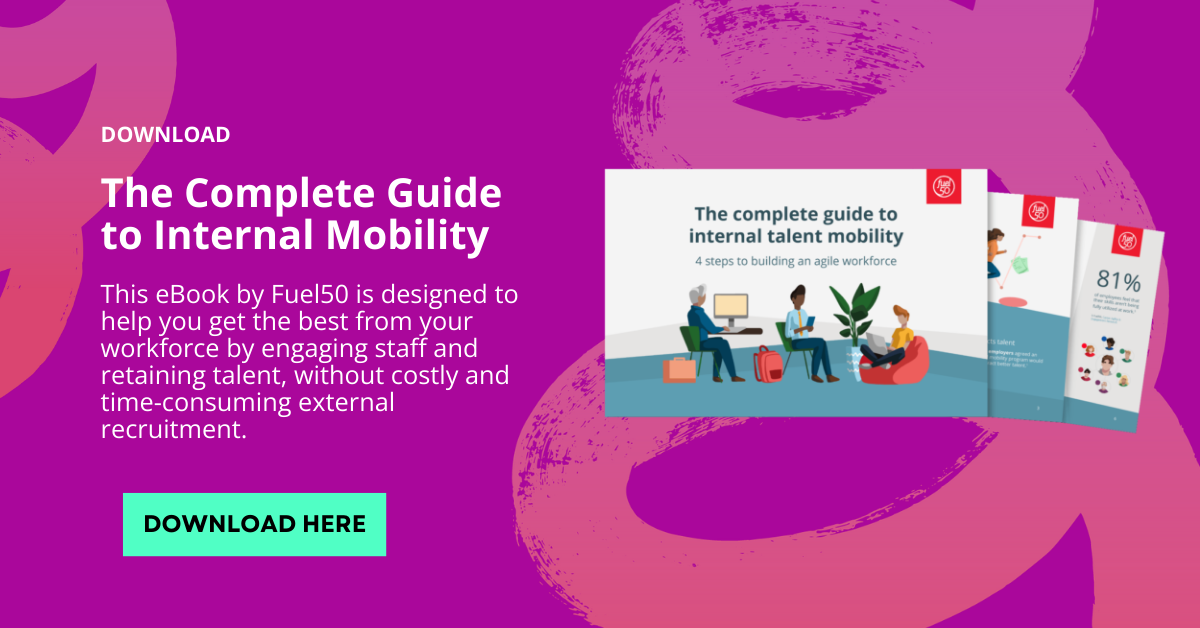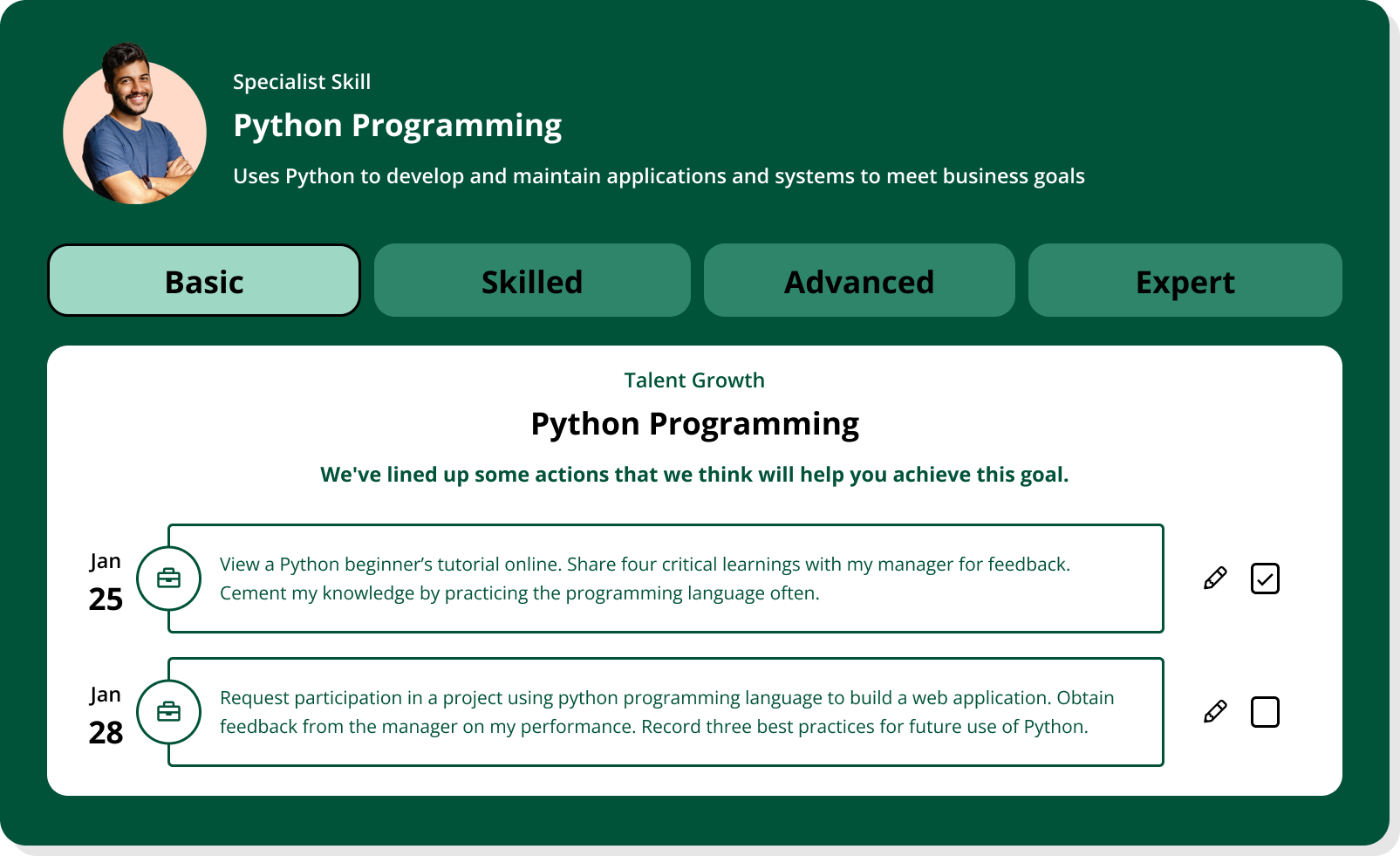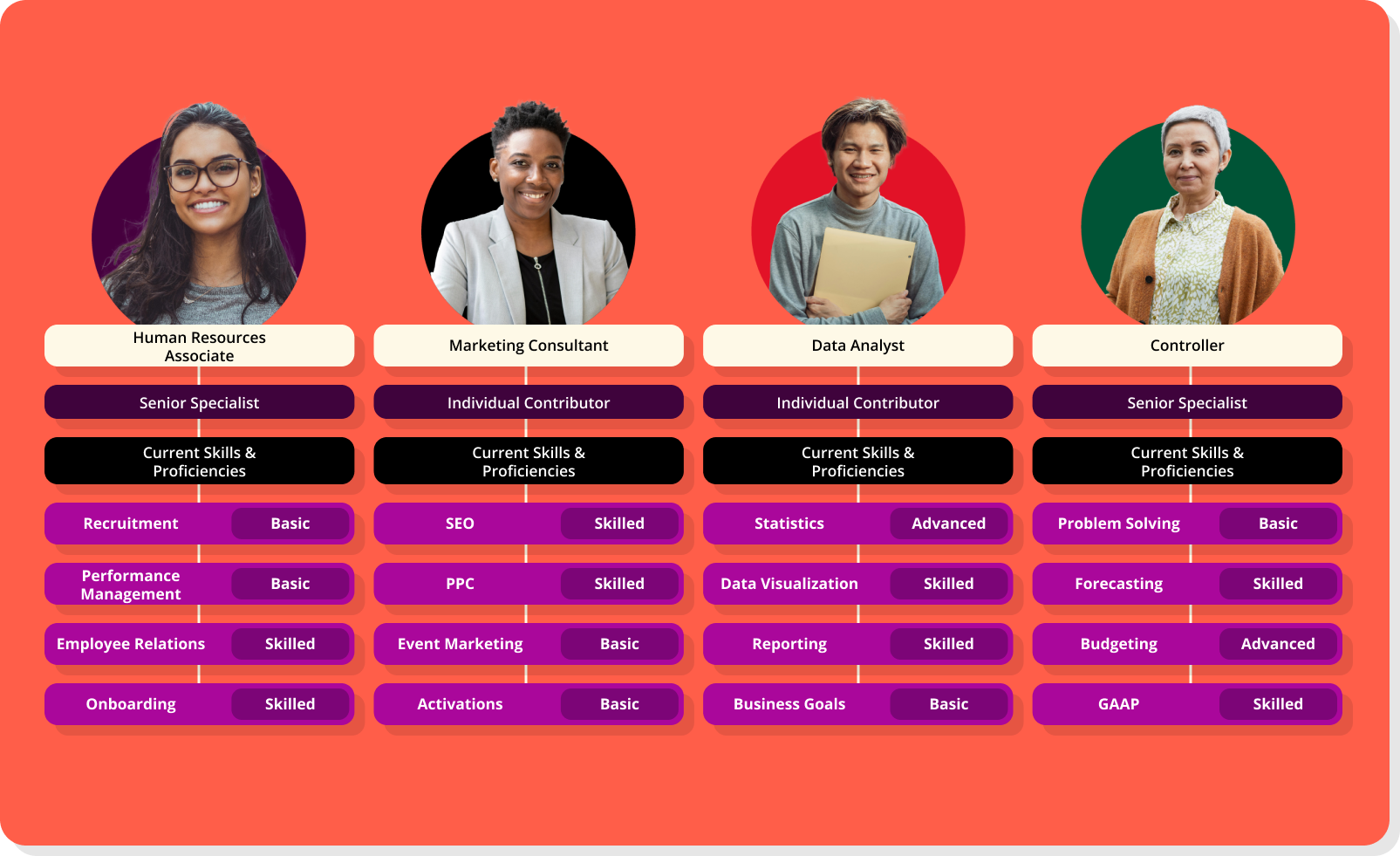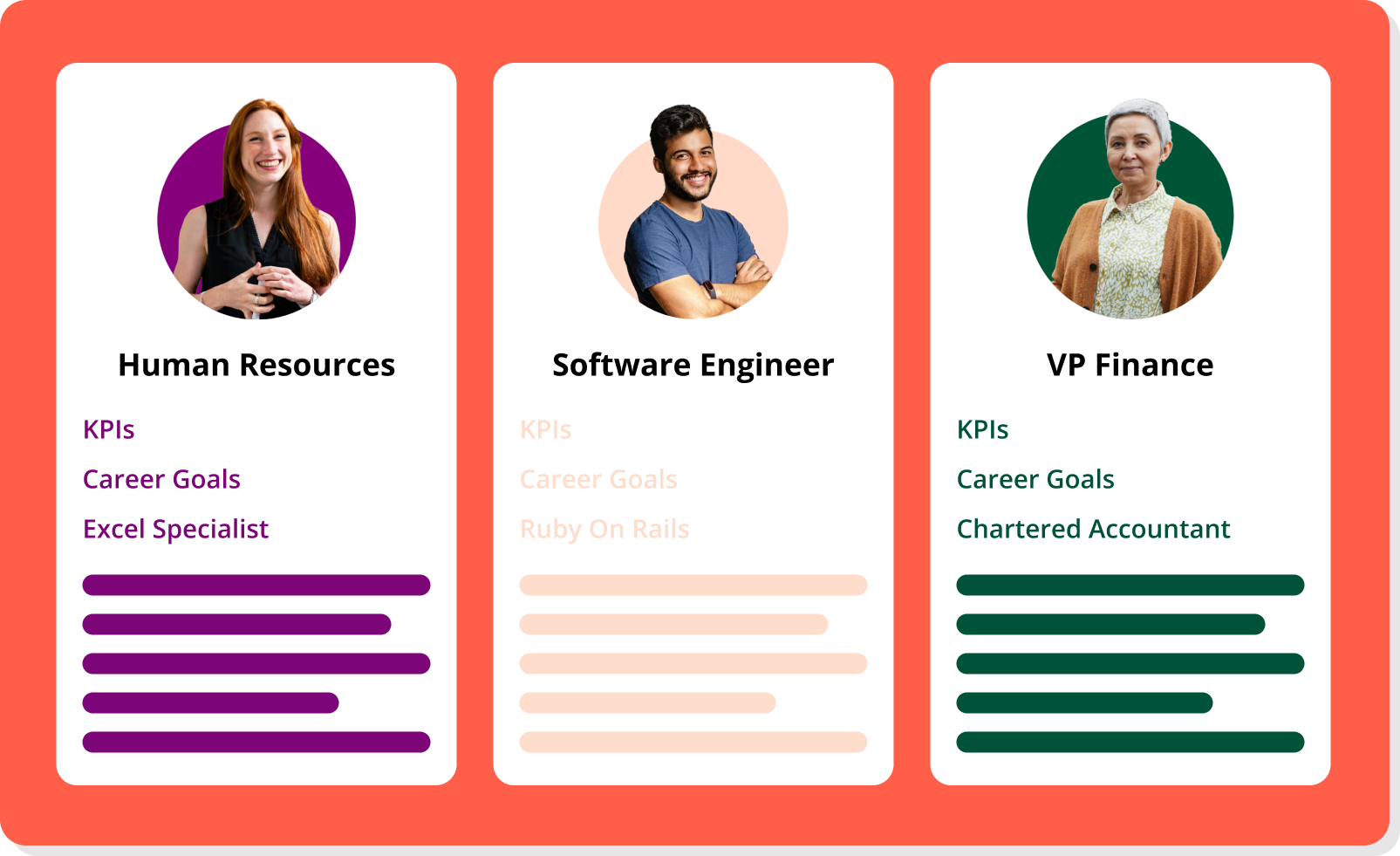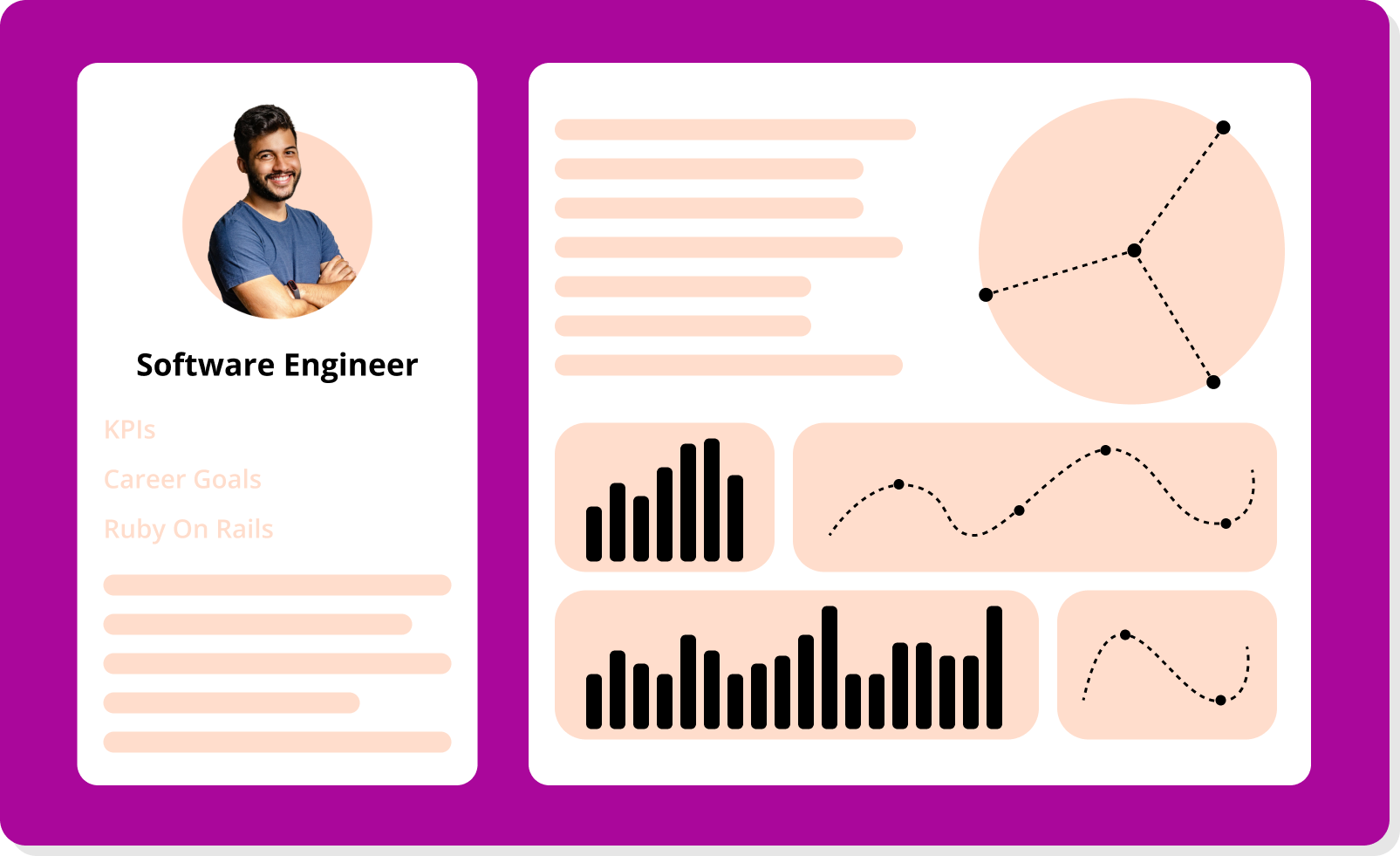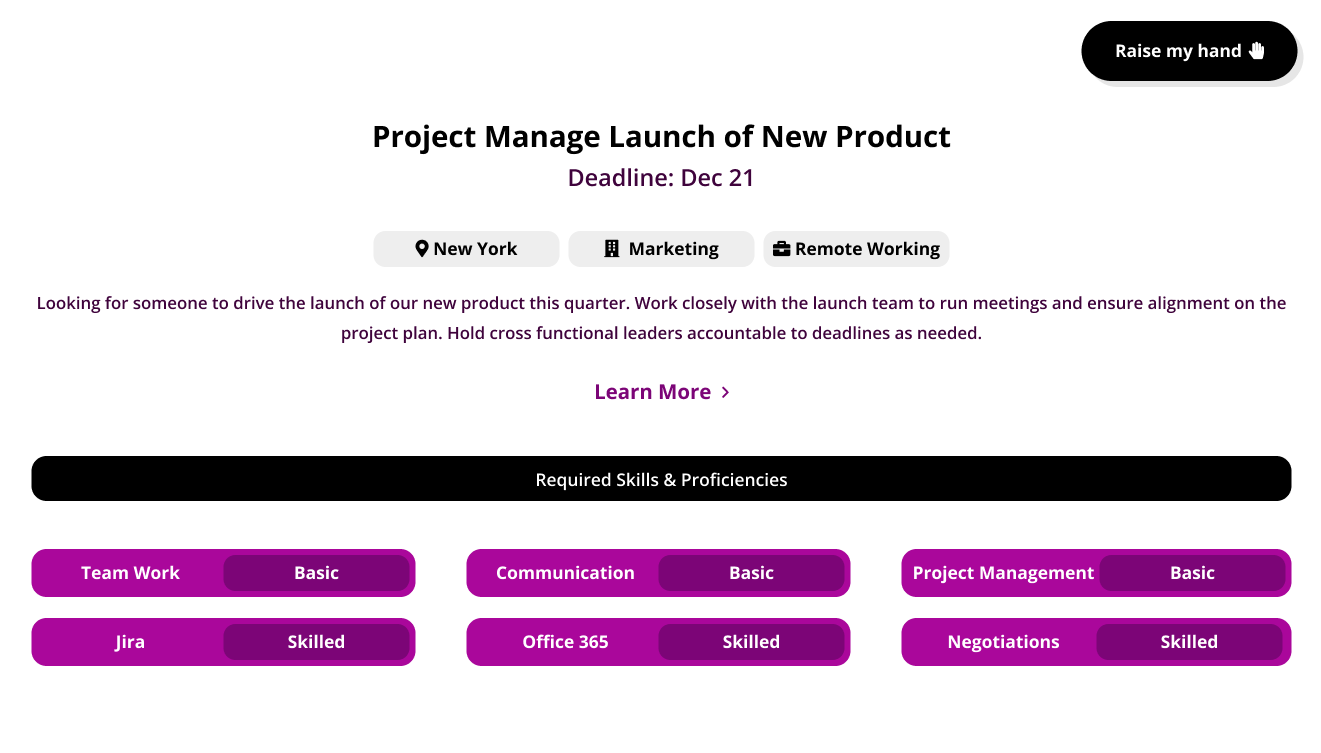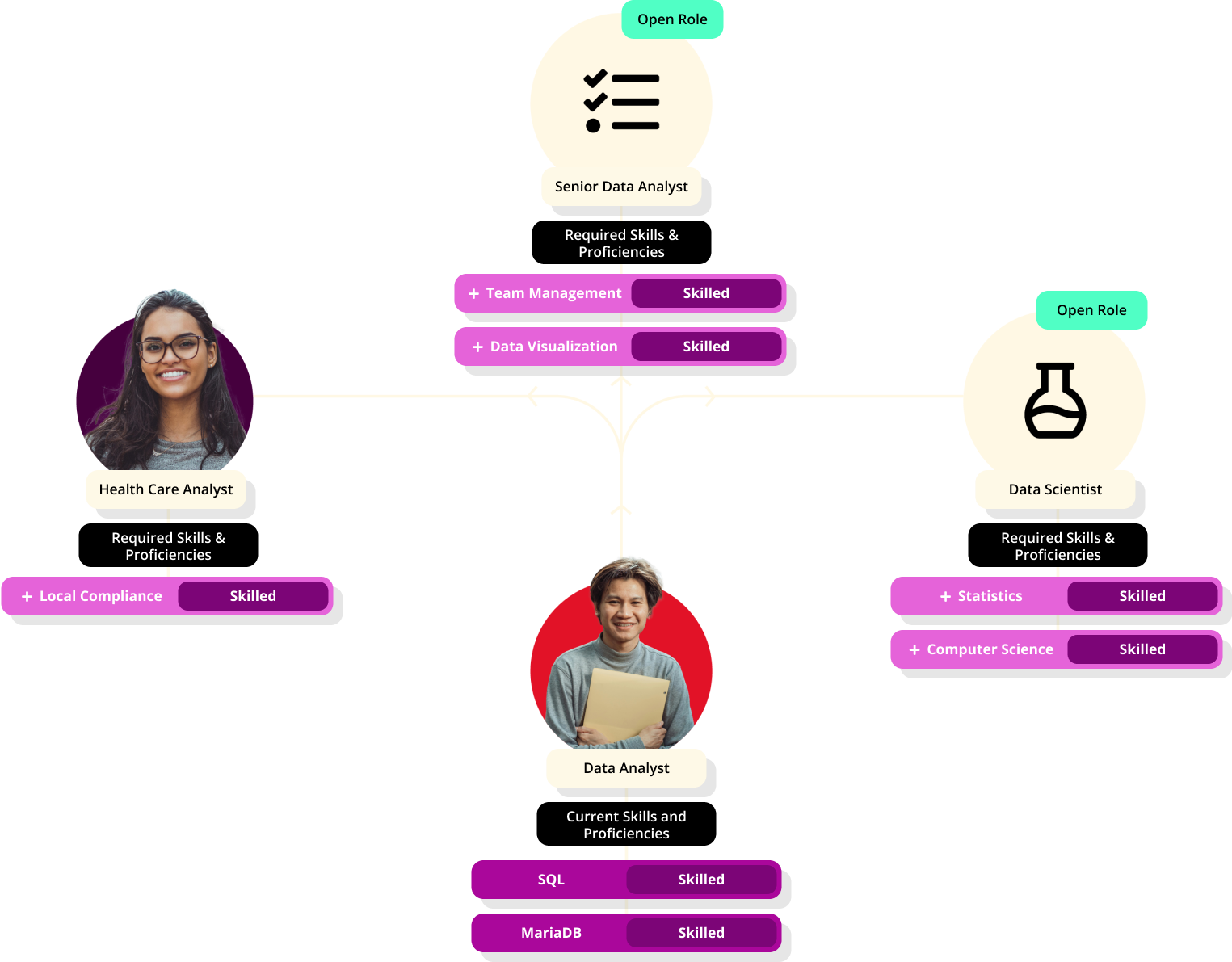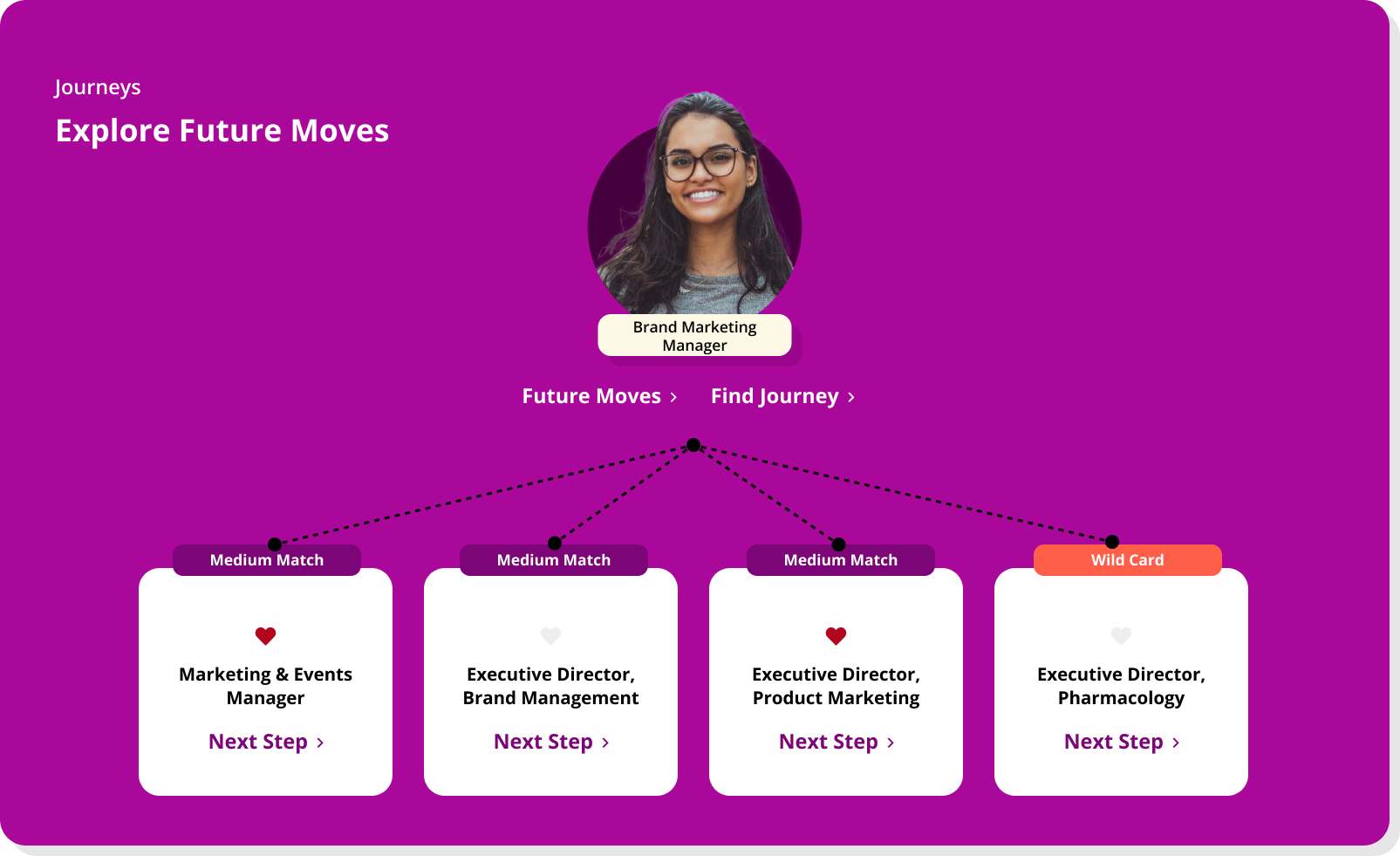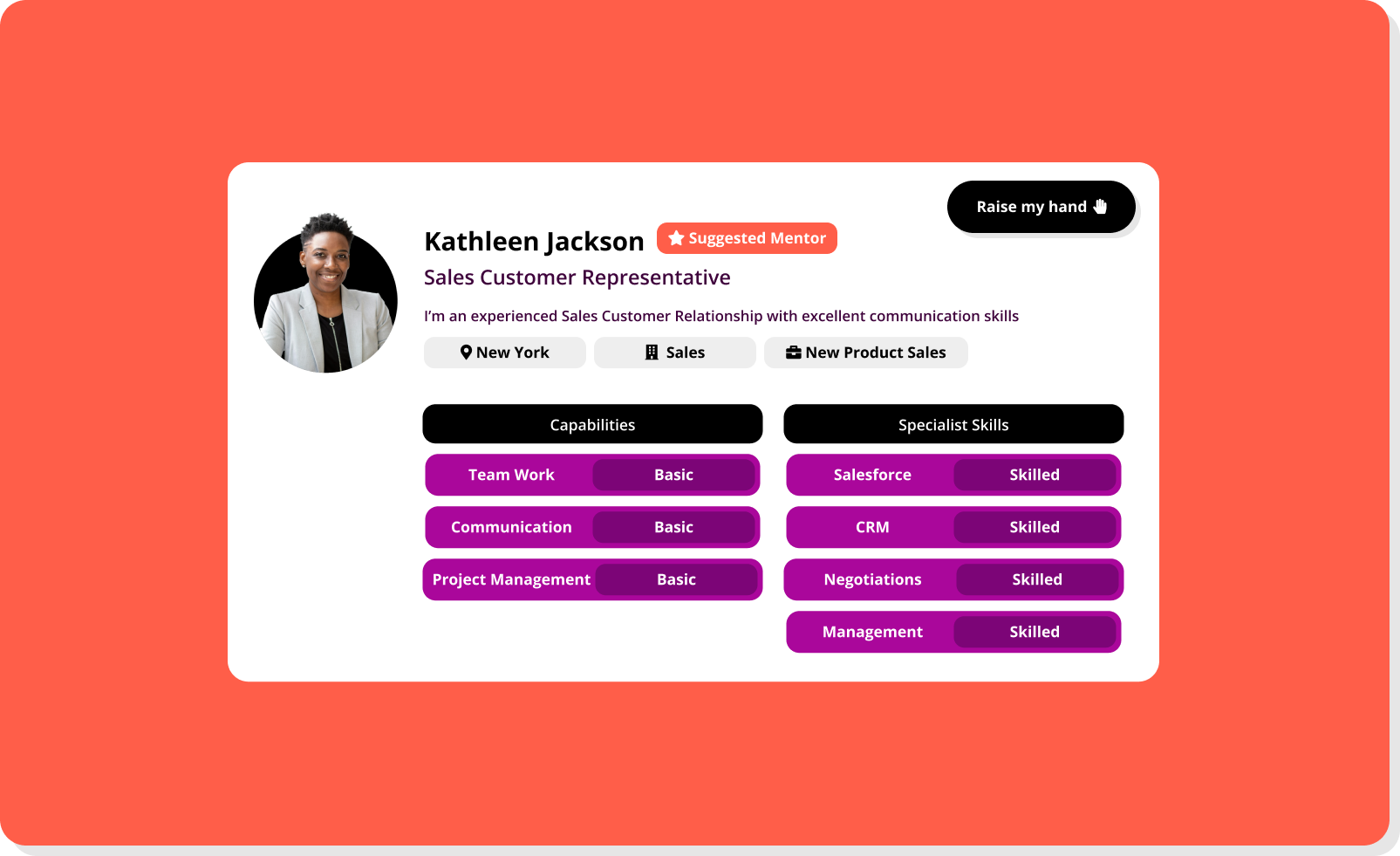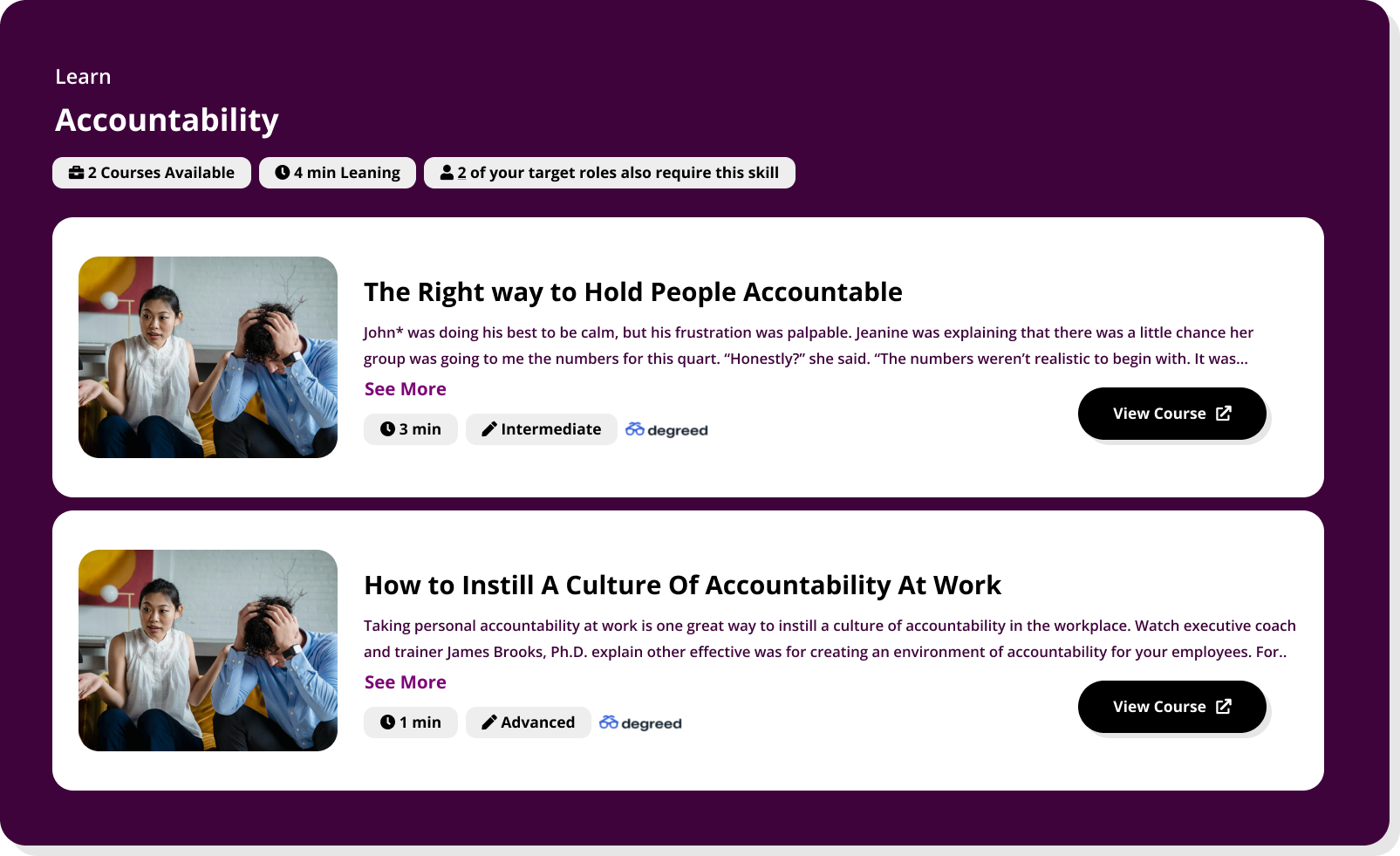Most HR teams are doing a lot: recruiting workflows, onboarding checklists, learning and development (L&D) platforms, performance review cycles, even succession planning.
However, none of these programs connects. Each program lives in its own silo. Talent acquisition doesn’t talk to learning. Onboarding stops at paperwork. Managers give feedback, but it doesn’t lead to growth.
So what happens?
Employees don’t know where they’re going. Managers can’t coach or support development meaningfully. HR stays stuck in reactive mode — constantly launching new initiatives to fix old problems.
There’s clearly no unifying strategy.
That’s what an integrated talent management model solves. It connects the dots across every stage of the employee experience — from hiring to onboarding to development — so your people aren’t just going through processes… they’re gaining momentum.
In this blog post, we’ll cover what an integrated talent management model is and why you need one within your organization.
What is an integrated talent management model?
An Integrated Talent Management Model is a connected framework that aligns every stage of the employee lifecycle — hiring, onboarding, performance, learning, and succession — into one strategy.
Why it matters:
- Without integration, each function operates in isolation. Recruiting doesn’t inform internal mobility. Learning happens without context. Performance reviews go nowhere.
- With integration, every process feeds the next. Hiring decisions reflect skill gaps. Onboarding sets the stage for growth. Learning ties to performance and advancement.
Integration turns disconnected programs into a system that actually drives retention, development, and workforce agility.
The 5 parts of an integrated talent management model
An integrated talent strategy is not defined by how many HR programs you run — it’s defined by whether each stage of the employee lifecycle builds on the one before it. In most organizations, these five stages exist in isolation.
Let’s walk through each part.
1. Talent acquisition (Strategic hiring begins with internal awareness)
Recruitment is where most talent strategies begin — and where many go off course.
In a non-integrated model, roles are opened based on business need, and hiring proceeds based on speed, market availability, and external search. Talent acquisition becomes a pipeline optimization problem: how quickly can we fill seats?
On the other hand, in an integrated model, recruitment starts further upstream. It begins with internal workforce data: who is ready for promotion, where succession gaps exist, what critical skills are missing, and where internal mobility is already possible. You hire to complement what you already have, not replace what you failed to develop.
This requires shared visibility between HR, hiring managers, and workforce planning. Without it, you overhire, duplicate capability, and miss internal candidates who could have grown into the role with targeted support. Integration here is a mindset shift: from “Who can we get?” to “What do we need that we don’t already have?”
2. Onboarding (Connect new hires to their long-term trajectory)
If recruiting is the entry point, onboarding is the first test of integration.
In most organizations, onboarding is administrative: set up accounts, review policies, complete compliance modules. It treats the hire as complete and the relationship as static. However, that thinking limits both early performance and long-term engagement.
In an integrated system, onboarding serves a strategic function: it introduces new employees not just to the company, but to their role trajectory. From day one, new hires are shown the skills they’ll need to succeed, how their performance will be evaluated, and where their role could take them. Their onboarding plan is mapped to their development plan. Their manager understands this plan, and HR systems support it.
This handoff between talent acquisition and onboarding is critical. If hiring is about finding fit, onboarding is about activating potential. Without a clear path forward, even the best hiring decisions stagnate quickly.
3. Performance management (Make development the outcome, not just the measurement)
Once an employee is fully ramped, performance management becomes the dominant talent system. In most companies, that system revolves around evaluation — quarterly check-ins, mid-year reviews, ratings. The goal is often compliance, not growth.
Yet, this is where integration breaks down most visibly. If performance data is siloed, it doesn’t inform skill development, learning plans, or internal mobility. The organization gathers feedback but does nothing with it.
In an integrated model, performance management serves as both a signal and a trigger. Feedback identifies development areas. Performance trends inform succession decisions. Goals are tied to business priorities and skill growth.
Crucially, performance must loop back to onboarding (Were the expectations clear?), and forward to learning (What skills do we now need to support?). Without these connections, performance becomes an isolated judgment event, not part of a continuous growth loop.
4. Learning & development (Deliver skills that support both current performance and future growth)
Learning is often viewed as an HR deliverable — content to be created, curated, and tracked. However, without integration, it becomes detached from the roles people hold, the goals they’re working toward, and the potential they’re being evaluated against.
When learning is integrated, it is precise. Performance data reveals the skills gaps. Succession plans surface readiness challenges. Onboarding shows early development needs. Learning is then deployed as a targeted, role-relevant intervention, not a list of optional courses.
This tight loop creates efficiency and accountability. Employees understand why they’re learning what they’re learning. Managers can reinforce learning goals in performance conversations. HR can measure whether learning investments result in improved capability and internal mobility.
And just as importantly, L&D connects back to talent acquisition: if the organization repeatedly hires externally for the same skill, that data should inform the learning roadmap. In this way, learning becomes both a development engine and a workforce strategy lever.
5. Succession planning (Build continuity at every level, not just the top)
Succession is typically treated as a senior leadership issue, reviewed annually, and driven by intuition as much as data. This narrow focus misses the broader strategic value of integrated succession planning.
In a fully integrated model, succession is democratized. It draws from performance reviews, learning participation, mobility activity, and skill profiles to identify readiness signals across the organization — not just at the top.
Succession decisions should be informed by who is developing the right skills, who is performing consistently, and who has taken on stretch roles. This only happens if the other systems — performance, L&D, onboarding, recruiting — are integrated and feeding consistent, comparable data into the process.
And the loop closes here: succession planning informs the next cycle of recruiting. If readiness gaps are persistent in certain areas, you don’t just fill roles — you revisit how you’re developing people. Integration turns succession from a reactive response into a proactive pipeline strategy.
How to make sure your talent strategy is truly integrated
By this point, the case for integration is clear. The question is no longer why it matters — it’s how to operationalize it.
Below are five structural actions that shift integration from concept to execution.
Map the talent lifecycle for continuity, not coverage
Integration starts with visibility. Build a flow that traces how employees move through the system — not at a policy level, but in practice. Identify where critical handoffs happen: Who owns the transition from candidate to contributor? How is onboarding intelligence passed to managers? When does performance feedback inform development plans? Where do high-potential signals get surfaced in succession conversations?
This kind of mapping reveals where coordination fails, where context gets lost, and where employees stall because no one owns the next step.
Don’t optimize for having “everything covered.” Optimize for whether people are actually progressing without friction.
Unify skill frameworks across hiring, development, and progression
When each function defines skills differently, talent decisions become fragmented by default. Recruiting builds competency models. L&D builds course catalogs. Performance reviews use behavioral anchors. The organization ends up with three different ways to describe the same roles — and no shared way to track development over time.
A unified skills framework fixes this. It defines the core and adjacent capabilities required for each role — technical, soft, leadership — and makes that framework visible across the employee lifecycle.
In practice, this means:
- Recruiters source and screen based on the same capabilities used in development plans.
- Managers give feedback tied to the same language that L&D uses to recommend content.
- Employees track progress in terms that align with promotion criteria.
This gives HR, managers, and employees a shared lens to understand readiness, growth, and fit.
Track progression, not just participation
It’s easy to measure what people do — course completions, review submissions, survey responses. However, those are activity metrics. They tell you if people are interacting with programs, not whether they’re growing.
An integrated model requires a shift in measurement logic. The goal is not throughput — it’s momentum.
That means asking:
- Are people acquiring the skills they need to move into new roles?
- Are performance improvements sustained and reflected in mobility?
- Are development plans closing known readiness gaps?
Progression can be tracked through internal movement rates, skill maturity curves, role readiness pipelines, and mobility timeframes. If you’re only measuring participation, you’re optimizing for engagement without outcome.
Redefine the manager’s role as talent enabler
In most systems, managers are asked to execute talent processes: complete a review, assign a goal, approve a course. However, integration requires something more foundational — it requires that managers see themselves as the primary mechanism for capability building.
That shift requires structure, support, and alignment.
Managers need visibility into the skills required for each role. They need tools to translate performance feedback into growth plans. They need access to learning pathways that match those plans. They also need to be held accountable — not just for team output, but for talent development.
Organizations that get this right don’t ask managers to “support development.” They expect them to own it — and give them the system infrastructure to do it well.
How Fuel50 makes talent management integrated
Most talent systems fail not because individual programs are weak, but because they operate in isolation. Fuel50 addresses this by anchoring the entire talent lifecycle in a single, skills-based architecture. Every interaction—whether it’s onboarding, feedback, internal mobility, or succession planning—draws from the same ontology and contributes to a connected ecosystem.
Here’s how that integration is built into the platform:
A skills ontology that unifies every talent touchpoint
At the center of Fuel50’s platform is a robust, IO psychologist-backed skills ontology. It defines thousands of technical, behavioral, and leadership skills across a plethora of functional domains. This is a living framework used to structure role definitions, employee assessments, career paths, and development plans.
This shared foundation solves a fundamental problem: when different parts of the business define skills differently, talent decisions become fragmented. For example, if recruiting uses one language, performance reviews use another, and L&D tags learning content using a third, employees receive mixed signals and HR struggles to compare or connect data across the lifecycle.
Fuel50’s ontology eliminates this disconnect. Every role, skill, and progression pathway is mapped back to the same structured language. Whether a person is being hired, onboarded, developed, or promoted, their progress is measured against a consistent and transparent capability model.
This consistency enables integration across systems without forcing artificial alignment. It allows HR, managers, and employees to work from the same frame of reference, which is the precondition for any sustainable talent strategy.
A talent marketplace that connects people to real, skills-based opportunity
Fuel50’s talent marketplace is where integration becomes visible to employees. It’s not just a job board or opportunity feed—it’s an AI-powered matching engine that surfaces short-term gigs, full-time roles, mentors, and learning resources based on the employee’s skills, goals, and interests.
Unlike traditional mobility platforms that rely on self-nomination or manager approval, Fuel50’s marketplace puts agency in the hands of the employee. It draws from their profile—built from skills assessments, performance history, and development plans—and actively recommends opportunities that are relevant and attainable.
This matters because internal mobility is where most talent systems collapse. People complete training but don’t get new roles. Managers identify high potentials but don’t know where to move them. Opportunities open up, but HR has no visibility into who’s ready.
Fuel50 connects all of these data points. It ensures that employees aren’t left waiting for growth—they can pursue it directly, with real-time insight into what they’re qualified for and what they need to work on to get there.
By doing so, Fuel50 turns performance and development inputs into mobility outputs—closing the loop that most organizations leave open.
Career journeys that link onboarding, development, and retention
When a person joins the organization, they can immediately explore personalized career journeys—mapped to roles within and beyond their current function.
Each journey shows not just the next possible role, but also:
- The skills required to be competitive for that role
- The skills the employee already possesses
- The learning, gigs, or mentoring options available to close identified gaps
What makes this integrated is that the same skills framework powering these journeys is also used in recruiting, performance evaluations, and succession planning. That means employees aren’t navigating multiple interpretations of what “readiness” means. They’re developing against the same standards the organization uses to evaluate and promote.
This alignment reduces ambiguity, increases trust in the system, and gives employees a clear sense of how their growth is measured. It also gives managers and HR leaders a structured way to have career conversations that aren’t vague or purely aspirational—they’re grounded in the same data the organization uses to make decisions.
This is how Fuel50 turns career pathing into a retention strategy. People stay when they can see how to grow—and when they believe the system is built to support that growth.
Skills inventory and intelligence that inform real workforce decisions
Fuel50 doesn’t just gather skills data—it makes it usable.
Through its skills inventory and analytics dashboards, HR and business leaders can see real-time capability across roles, teams, and geographies. This includes:
- Current skill maturity by role or function
- Skills gaps relative to future-state workforce needs
- Bench strength for critical roles
- Readiness indicators based on performance, learning, and experience
This level of insight moves skills from something HR tracks in spreadsheets to something leaders can act on.
For example:
- If learning programs aren’t closing a key gap, you can adjust strategy.
- If a team has succession exposure, you can identify who to invest in now.
- If a business unit is repeatedly hiring externally for the same role, you can backtrack to why internal readiness isn’t being built.
What makes this integrated is not just the availability of data—but the alignment of that data with every other Fuel50 feature. The same skills identified as gaps are used to trigger learning recommendations, internal mobility suggestions, and mentoring pairings.
This turns workforce planning into a continuous, skills-driven process rather than a quarterly fire drill.
Native feedback, goal setting, and mentoring that reinforce development
Fuel50 includes built-in tools for 360 feedback, performance goals, and mentoring—each tightly connected to skills and career pathways.
Feedback isn’t generic—it’s structured around specific capabilities and tied to the skill ontology. Goals aren’t abstract—they’re tracked against the skill development needed to progress to the next role. Mentoring isn’t informal—it’s matched using development needs and lived experience across the platform.
This integration closes two common gaps:
- Feedback loops that never lead to action
- Learning and development that isn’t reinforced day-to-day
In Fuel50, every development input—feedback received, gig completed, goal achieved—feeds the employee’s growth profile. That profile updates their skill readiness, informs future opportunity matches, and helps the organization track progress with real accuracy.
Because all of these interactions happen within the same ecosystem, Fuel50 ensures that growth isn’t just something the platform suggests—it’s something the employee experiences directly, with structure and reinforcement.
System integration that makes skills data flow across the tech stack
Lastly, Fuel50 is designed to integrate cleanly with existing HR systems—including ATS, HRIS, performance, and learning tools like Workday, Oracle, SAP, Cornerstone, Degreed, and others.
This ensures that skills data doesn’t live in isolation. Hiring decisions can be informed by internal talent data. Onboarding can carry over development plans. Performance reviews can reflect updated skill profiles. Learning records can trigger internal mobility suggestions. Succession data can feed workforce planning dashboards.
These integrations enable a true end-to-end experience—where employee growth is not interrupted by system boundaries.


